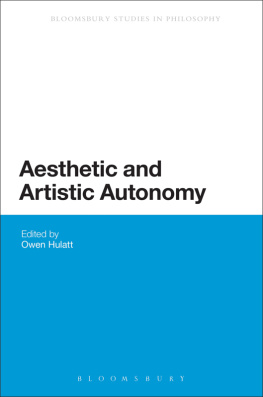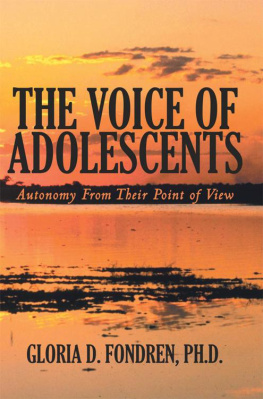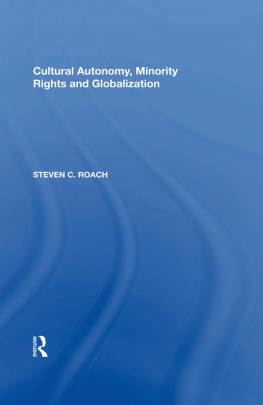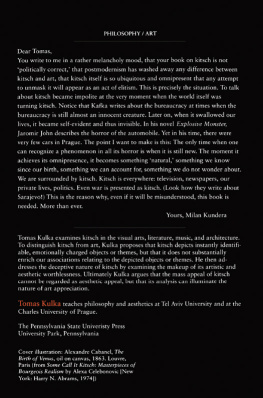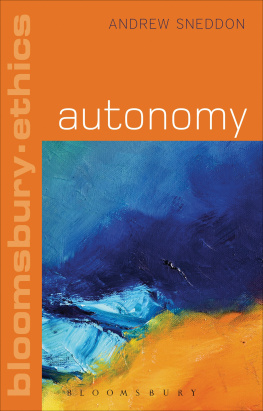Hulatt - Aesthetic and Artistic Autonomy
Here you can read online Hulatt - Aesthetic and Artistic Autonomy full text of the book (entire story) in english for free. Download pdf and epub, get meaning, cover and reviews about this ebook. City: London, year: 2015, publisher: Bloomsbury Publishing;Bloomsbury Academic, genre: Romance novel. Description of the work, (preface) as well as reviews are available. Best literature library LitArk.com created for fans of good reading and offers a wide selection of genres:
Romance novel
Science fiction
Adventure
Detective
Science
History
Home and family
Prose
Art
Politics
Computer
Non-fiction
Religion
Business
Children
Humor
Choose a favorite category and find really read worthwhile books. Enjoy immersion in the world of imagination, feel the emotions of the characters or learn something new for yourself, make an fascinating discovery.
- Book:Aesthetic and Artistic Autonomy
- Author:
- Publisher:Bloomsbury Publishing;Bloomsbury Academic
- Genre:
- Year:2015
- City:London
- Rating:5 / 5
- Favourites:Add to favourites
- Your mark:
- 100
- 1
- 2
- 3
- 4
- 5
Aesthetic and Artistic Autonomy: summary, description and annotation
We offer to read an annotation, description, summary or preface (depends on what the author of the book "Aesthetic and Artistic Autonomy" wrote himself). If you haven't found the necessary information about the book — write in the comments, we will try to find it.
Hulatt: author's other books
Who wrote Aesthetic and Artistic Autonomy? Find out the surname, the name of the author of the book and a list of all author's works by series.
Aesthetic and Artistic Autonomy — read online for free the complete book (whole text) full work
Below is the text of the book, divided by pages. System saving the place of the last page read, allows you to conveniently read the book "Aesthetic and Artistic Autonomy" online for free, without having to search again every time where you left off. Put a bookmark, and you can go to the page where you finished reading at any time.
Font size:
Interval:
Bookmark:
I work in an idiom of post-analytic phenomenology that seeks to overcome the great tribal division between analytic philosophy and the continental tradition. This involves a critical overcoming of the limitations of both. For example, rather than focusing on how we talk about art (as in analytic aesthetics), a post-analytic phenomenology prefers to describe the character of the art object itself as a made or assembled sensuously significant artefact and to consider the complex cognitive basis of such artifice (both in its own right and in terms of the observers aesthetic experiences of it). An approach such as this takes the great traditions of artistic making in both Western and non-Western cultures as its paradigm. There is a place for Western conceptualism within this, but as a marginal rather than a central factor. The analytic tradition in contrast reverses this relation. It attempts to wag the body of art by its tail.
However, where my approach does intersect with analytic aesthetics is in its insistence upon clear and rigorous structures of argument and consideration of potential counter-arguments and examples. A great deal of continental aesthetics rests on asserting rather than arguing obscure ideas, and often takes obscurity to be tantamount to profundity.
It should be emphasized that the division I am working to overcome has grown even greater as my career has developed. Nowadays, the two tribes scarcely acknowledge one another as philosophers, let alone critically engage with one another. Sad, of course, but the search for truth must go on, irrespective of tribal taboos
The idea of art having autonomy of meaning is not fashionable. In the field of literary and art historical studies, for example, there is a considerable emphasis on how meaning is bound up with a works relation to those intentions and social conditions which informed the original circumstances of its production. And even if as in some recent postmodern thought the intelligibility of specific artistic intentions is queried, the artworks capacity to express its producers broader attitude to power, race, class and gender relations has become an article of faith for feminist and postcolonial theory.
These contextualist approaches find a broad parallel in the institutional and related definitions of art propounded by Danto, Dickie and Levinson (among others). For such thinkers, the decisive factor in constituting art is not the making of an artefact, but the way in which an artefact (or relevant state of affairs) directs us towards the creators intentions or theory concerning its artistic status or function.
On these terms meaning is necessarily tied to what the artist intends, or to cultural issues contemporary with its creation, or to related factors which members of the art world take to be posited by the work. The original circumstances of production are paramount.
In this chapter, I will not undertake a sustained refutation of this emphasis.
On the basis of this, we can posit an autonomous dimension of artistic meaning and value, which is, in logical terms, indifferent to empirical knowledge or historical theory concerning the artists original intentions and attitudes.
One must stress that autonomy in this context does not amount to the ahistorical. Indeed, the theory proposed is one which assigns the most decisive importance to the works phenomenal structure interpreted in relation to the diachronic history of the artifactual practice of which it is an instance.
The emphasis here is on the way in which the historical distinctiveness of an artists treatment of his or her medium is conceptually connected to the autonomously significant artistic meaning which can be the outcome of such a treatment. This approach embodies a creator- rather than a consumer-based conception of art.
To establish these claims I will, in Part one, adapt and generalize a conceptual schema first formulated by Erwin Panofsky. After a lengthy development of its implications for art and the aesthetic, I will, in Part two, consider and dismiss some putative objections to these implications. In Part three, I will take my approach much further by analysing some specific ways in which the artwork can generate autonomous meaning.
To recognize an artefact is to locate it in terms of some code governing its human function. These usually involve function in a strict sense, i.e. this is (or is probably) used for that. Art, however, represents a problem, since it is a function of various intersecting codes pertaining to the particular media involved, and to how these media are interpreted.
Even more problematic is that it transcends mundane criteria of functionality. In non-Western cultures especially, a major importance is assigned to the formative dimension of art. This centres on the process of making, as well as the end product; and on an audience involvement which involves complex patterns of participation rather than the consumer-orientated notions of reading and consumption of meaning which characterize recent Western stereotypes of art interpretation.
However, there is one area that can be focused on in a way which (eventually) takes us beyond this Western stereotype. It takes as its premiss the fact that, in the broadest terms, art represents. That is to say the artwork embodies semantic codes and is thence to be interpreted as referring to things other than to itself. (This is even true of self-referential work, insofar as the recognition of self-referentiality logically presupposes contrasts with other works.)
There are three major aspects to the semantics of representation. In what follows, I shall loosely adopt and refine a schema originally devised by Erwin Panofsky in relation to the visual arts.
The most basic element in this schema I shall call the protosymbolic. It has two constitutive aspects. The first is determined by reference to kinds of subject matter, syntactically related to one another. For example, one could not describe something as a picture, poem or story unless one could say in principle what kind of general state of affairs the picture is of, or the poem or story is nominally about.
The second basic aspect concerns the formal structure of a work. One would not have comprehended a work in its perceptual or imaginatively intended entirety without experience of the specific ways in which parts of its phenomenal fabric relate to other parts, and to the whole. In music, of course, key systems (or the absence of them) involve a kind of merging of syntactic and formal elements.
To understand these two aspects of the protosymbolic is to acquire the most basic competence in relation to an artefactual code. Once one has acquired such a competence, the representation is basically intelligible without reference to external context.
In the case of the next element in the Panofskian schema namely the iconographic aspects of a code matters are very different. Iconography addresses what are (in strict logical, if not existential and historical terms) secondary meanings the symbolic dimension in its most familiar sense.
Specifically, the iconographical aspect of a work consists in making the protosymbolic dimension more specific. Instead of centring on the kind of thing being represented, it gravitates, rather, around the more particular individuals or culturally specific states of affairs to which the artist is intentionally alluding.
These can, of course, be real items, persons or situations (or ones which previously existed), or ones derived from myth or fiction or the imagination. There is, indeed, a further aspect to this, inso far as such elements can also serve as allegories or metaphors for more general meanings.
Font size:
Interval:
Bookmark:
Similar books «Aesthetic and Artistic Autonomy»
Look at similar books to Aesthetic and Artistic Autonomy. We have selected literature similar in name and meaning in the hope of providing readers with more options to find new, interesting, not yet read works.
Discussion, reviews of the book Aesthetic and Artistic Autonomy and just readers' own opinions. Leave your comments, write what you think about the work, its meaning or the main characters. Specify what exactly you liked and what you didn't like, and why you think so.

